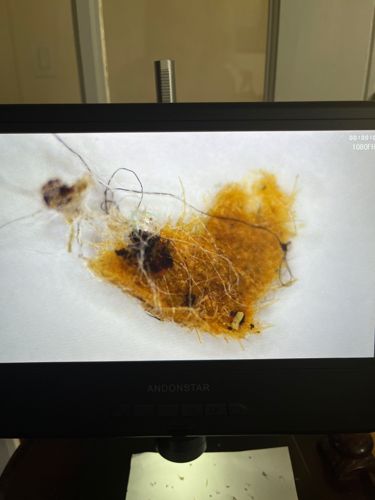Carpet Beetle Larva (likely varied carpet beetle or black carpet beetle)
Scientific Name: Dermestes lardarius, Anthrenus verbasci, Attagenus unicolor (among others in Dermestidae family)
Order & Family: Coleoptera (beetles), Dermestidae (skin beetles)
Size: Larvae typically 2-5 mm, adults 2-5 mm.

Natural Habitat
Indoors, associated with stored products, natural fibers, pet dander, lint, and dust accumulations. Larvae are often found in dark, undisturbed areas like under carpets, upholstered furniture, in closets, and in cracks/crevices.
Diet & Feeding
Opportunistic scavengers. Larvae feed on a variety of organic materials including natural fibers (wool, silk, fur, feathers), pet hair/dander, dead insects, museum specimens, stored food products (grains, cereals, dried meats), and lint.
Behavior Patterns
Larvae are the damaging stage, actively feeding and growing, often camouflaged by accumulating debris on their bodies. They undergo several molts. Adults are typically attracted to light and may be found near windows, but the larvae prefer dark, undisturbed areas. The image shows what appears to be a carpet beetle larva, possibly with some debris attached to its body, which is a common characteristic for some species to aid in camouflage.
Risks & Benefits
Risks: Considered a household and museum pest, capable of causing significant damage to textiles, carpets, clothing, furs, and stored food products. Can trigger allergic reactions in sensitive individuals due to shed larval skins and frass. No direct benefits for humans, but in nature, they play a role in decomposition.
Identified on: 9/22/2025